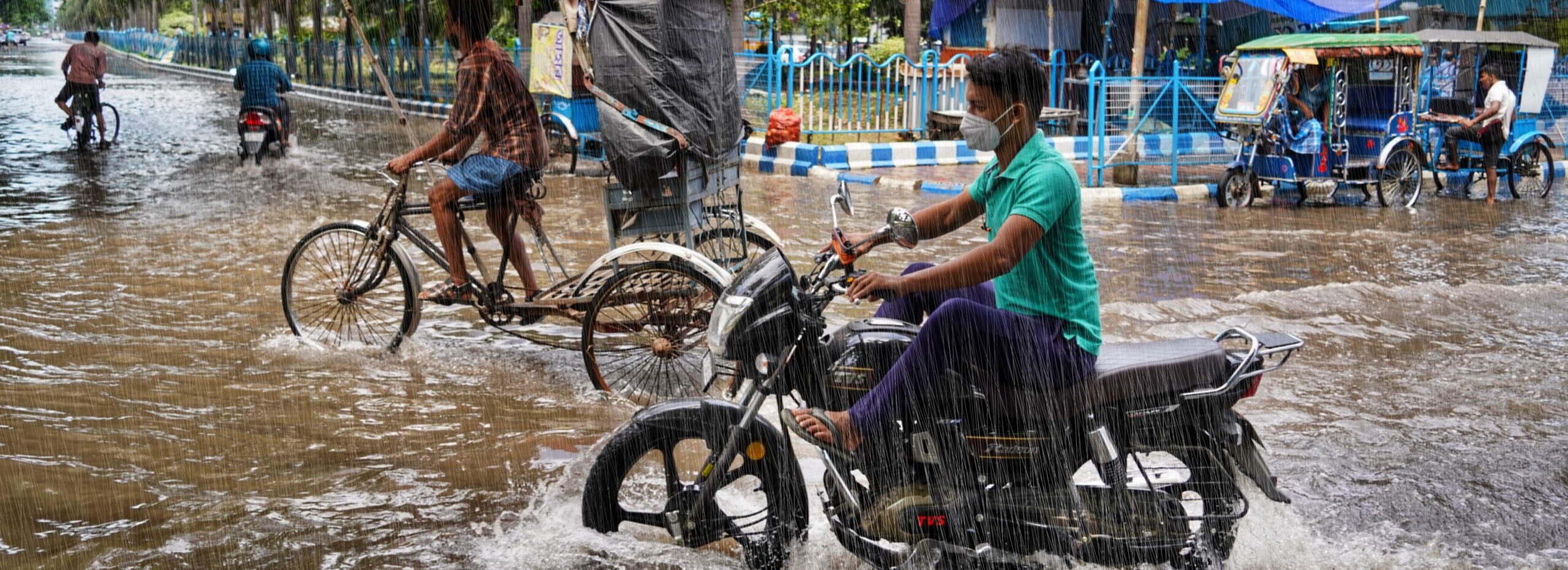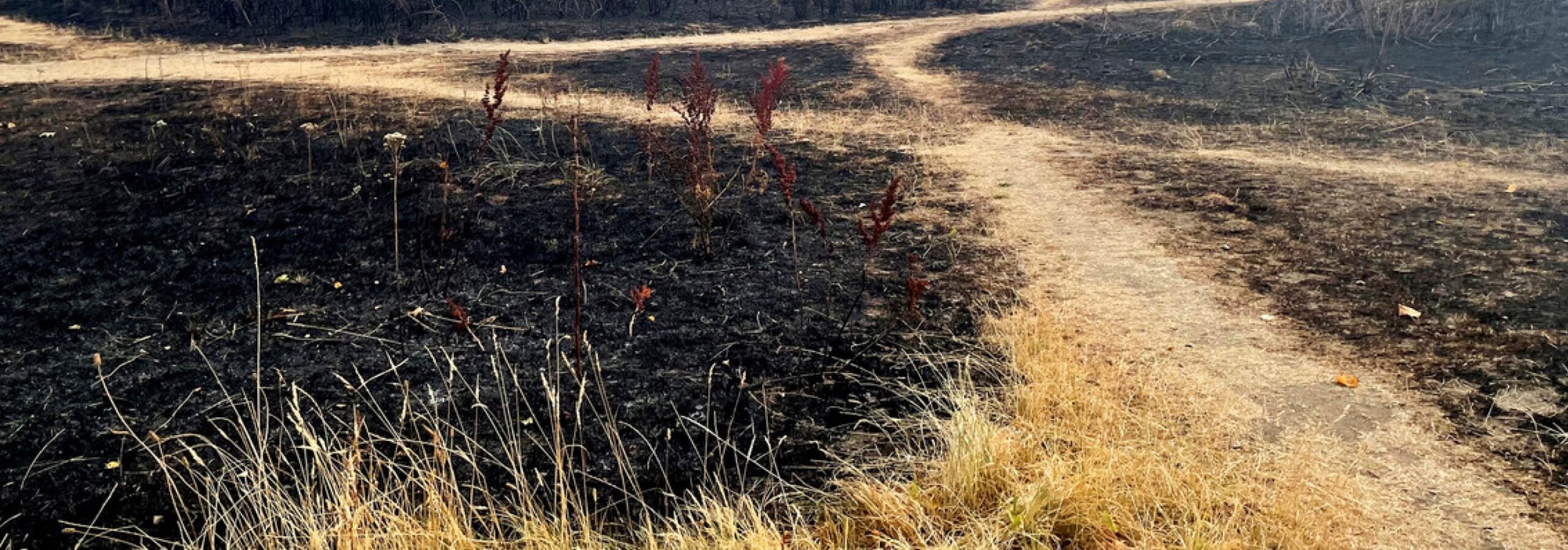The southeast region of Brazil (SEB, defined as the area between 15°–25°S and 40°–48°W; Fig. 9.1a) experienced remarkably dry conditions from January 2014 to February 2015, comprising the 14-month period that includes two rainy seasons investigated here. This region includes São Paulo, Brazil´s most populated city, which suffered impacts due to water shortages, and the watersheds and reservoirs feeding the city’s water supply system. The wet season occurs during austral summer and the dry season during austral winter. The South Atlantic convergence zone (SACZ) is the main mechanism responsible for the region’s austral summer rainfall.
Introduction
During summer 2014, there was a complete absence of SACZ episodes (Coelho et al. 2015). Previous major droughts occurred in the region in 1953/54, 1962/63, 1970/71, and 2001. While droughts have very complex criteria, these were all characterized by large rainfall deficits while the effect of the SACZ needs further investigation. The 1953/54 rainfall deficit prompted construction of the largest water supply system (Cantareira) used for São Paulo (Porto et al. 2014). The 2014/15 drought had major impacts in São Paulo due partly to a four-fold population increase since 1960 (Figure 1b). Although new water supply systems were constructed after Cantareira, it is still by far the largest in terms of capacity and number of people supplied (until early 2015) and hence is used as an indicator of the impacts of the SEB drought on water supply. In January 2015, Cantareira, which used to supply 8.8 million people in São Paulo, sank to a water volume of just 5% of capacity (Figure 1c), and currently supplies just 5.3 million people. Other systems (Guarapiranga and Alto Tiete) started to supply the excess population, those previously supplied by Cantareira, after the water crisis was established.
In this analysis, we investigate potential changes in the hydrometeorological hazard, defined by accumulated precipitation and the difference between precipitation and evaporation (P − E) in the SEB region. The true impact, however, is due to a combination of a physical event with vulnerability and exposure, in this case on millions of people in the affected area (Field et al. 2012).
The current drought reflects increasing trends in exposure. São Paulo’s population grew by 20% in the past 20 years. Water use has increased at an even faster rate over the same period (Figure 1b). Vulnerability of water supply systems remains high. Recognizing that water governance is key to reducing vulnerability, Brazil has advanced decentralisation of water management (Engle and Lemos 2010).






Other aspects of vulnerability give a more mixed picture. This drought has not resulted in sustained power outages, a common consequence of water shortages. Similarly, no cholera outbreaks have been reported, reflecting major public health investments (Barrato et al. 2011). Dengue, however, has spiked in São Paulo, with a tripling of cases in 2015 compared with 2014, including several deaths.
Data and methods
Drought can be defined in multiple ways and have multiple drivers (Field et al. 2012). Here we employ a multi-method approach to assess whether and to what extent anthropogenic climate change contributed to the 2014/15 drought event over SEB, using both observations and general circulation model (GCM) simulations of 14-month accumulated precipitation and P – E. We chose these measures to robustly assess the combined thermodynamic and dynamic effect of anthropogenic climate change on the drought. Future studies will disentangle these effects and analyze the driving mechanisms (e.g., Coelho et al. 2015). Our methods include: (i) trend and return period estimation for the 2014/15 event based on historical records; (ii) an estimation of the change in return periods of this event by comparing very large ensembles of SST-driven GCM simulations of the current climate with simulations of the climate in a “world that might have been” without anthropogenic greenhouse gas emissions; and (iii) a similar procedure using state-of-the-art coupled climate model simulations (CMIP5; Taylor et al. 2012).
- The observational analysis is based on the GPCC-V6 analysis up to 2010 (Global Precipitation Climatology Centre; Schneider et al. 2014), GPCC monitoring analysis 2011–14, and GPCC first guess analysis Jan–Feb2015. The monitoring analysis was adjusted to GPCC-V6 using linear regression on the 1986–2010 overlap period. Figure 9.1a shows January 2014–February 2015 precipitation anomalies relative to the 1941–2010 mean. Eastern Brazil, including SEB, shows 25% to 50% deficits. Figure 9.1d shows 14-month precipitation running means averaged over SEB. No evidence of a trend was found in the mean, whereas dry extremes showed a barely significant decrease up to 2013 (Fig. 9.1d, lower panel). The 2014/15 SEB deficit is similar to previous events, with dry episodes around 1963, 1970, and 1954 more severe than the current episode up to February 2015. Figure 9.1e shows a generalised Pareto distribution (GPD) fit to the driest 20% records assuming a stationary distribution. The January 2014–February 2015 deficit (435 mm) return period is about 20 years (95% CI: 10–60 years).
- We use the distributed computing framework— weather@home—to run the Met Office Hadley Centre atmosphere-only general circulation model HADAM3P (Massey et al. 2014) to simulate precipitation and P − E in two different model ensembles representing: 1) observed climate conditions of 2014/15, and 2) counterfactual conditions under pre-industrial greenhouse gas forcings and 11 different estimates of SSTs without human influence (Schaller et al. 2014). The empirical SEB total precipitation return periods (Figure 2a) show that in this approach dry precipitation extremes have become less likely due to anthropogenic greenhouse gas emissions: what would have been a 1-in-20-year precipitation deficit event like the 14-month 2014/15 event has become approximately a 1-in-30-year event (95% CI: 0 to 35 years). At the same time there is no detectable change in P − E due to human-induced climate change (Figure 2c) because of an increase in evaporation that cancels the increase in precipitation. The decrease in extreme low precipitation seen in SEB however is not uniform (consistent with observations; see Supplementary Figure 2a) across Brazil as a whole (Figure 2e).
- We use the same approach as described in Lewis and Karoly (2014) and King et al. (2015) to estimate the fraction of attributable risk (FAR; Allen 2003) of precipitation totals below 25%, 20%, 15%, and 10% of the 1961–90 average and P − E below 170 mm (the 10th percentile) in a subset of the CMIP5 ensemble (see supplemental material). In contrast to the weather@home we find an increase in the risk of low precipitation with FARs greater than 0.167 (with 90% confidence) for the observed accumulated precipitation. However, the null result is confirmed with FARs slightly greater than zero for P − E.
Conclusion
While it has been speculated that anthropogenic climate change is a leading driver of the current drought (e.g., Escobar 2015) our multi-method approach finds limited support for this view. Evidence from observations shows large precipitation deficits becoming less common, albeit with large uncertainties. Likewise, large climate model ensembles show a non-significant effect of anthropogenic greenhouse gas emissions on the probability of low water availability (P − E). We therefore conclude the hydrometeorological hazard risk has likely not increased due to human-induced greenhouse gas emissions and the large impact of the 2014/15 event (particularly in the São Paulo region) is more likely driven by water use changes and accelerated population growth.
This does not, however, mean there is no human influence on the hazard itself. We expect (and observe) evaporation to rise due to higher temperatures as a direct consequence of the Clausius–Clapeyron relationship when there is enough water availability. However, this is not the case in droughts where a precipitation deficit over an extended period of time bounds evaporation. Hence the trend in evaporation tends to cancel the trend in dry precipitation extremes, giving a null result in P − E extremes. Overall, our analysis suggests changes in hydrometeorological risk are small while increasing water consumption increases the risk of profound water shortages.
The negative trend in observed dry extremes and large ensemble simulations is in contrast to a positive trend in CMIP5 dry precipitation extremes (Figs. 9.1f, 9.2b). This apparent contradiction could result from the differing physics among the CMIP5 models and weather@home, or from the different underlying assumptions of the different methodologies (e.g., climatological behavior in CMIP5 versus single year simulations using weather@home or SST-forced versus coupled). This highlights the importance of analyzing the same event using multiple methods as a means of better assessing confidence in our results.
Our analysis suggests the specific geographic location of the study area plays an important role in the results as São Paulo sits on the edge of the boundary between decreasing precipitation (to the north) and increasing precipitation (to the south) (Figures 2e,f). Future projections show a continuation of this general pattern, but given the large spread between models, scenarios, and seasons, it is possible the wet–dry boundary will shift leaving São Paulo’s precipitation future uncertain (van Oldenborgh et al. 2013). Hence, while the recent drought impacts were most likely not driven by an increase in hydrometeorological hazard, there is a risk that this may not hold in an even warmer world. Future analyses of the dynamical drivers of the hazard might allow this risk to be quantified.






Acknowledgements
We thank Antonio Divino Moura and David Karoly for their guidance and input on the manuscript and Dina Sperling and Roop Singh for all their help, our colleagues at the Oxford eResearch Centre and the Met Office Hadley Cen tre PRECIS team for their support for the application and development of weather@ home and all participants in climateprediction.net. The work was supported by the EUCLEIA project funded by the European Union’s Seventh Framework Programme (FP7/2007–2013).
References
Allen, M. (2003) Liability for climate change. Nature, 421: 891–892, doi: 10.1038/421891a
Barreto, M. L., Teixeira, M.G., Bastos, F.I., Ximenes, R.A.A., Barata, R.B. and Rodrigues, L.C. (2011) Successes and failures in the control of infectious diseases in Brazil: Social and environmental context, policies, interventions, and research needs. Lancet, 377: 1877–1889, doi: 10.1016/S0140-6736(11)60202-X
Coelho, C.A.S., de Oliveira, C.P., Ambrizzi, T., Reboita, M.S., Camila Bertoletti Carpenedo, Campos, J.L.P.S., Tomaziello, A.C.N., Pampuch, L.A., de Souza Custódio, M., Dutra, L.M.M., Da Rocha, R.P. and Rehbein, A. (2015) The 2014 southeast Brazil austral summer drought: Regional scale mechanisms and teleconnections. Climate Dynamics, 46(11–22): 3737–3752. doi: 10.1007/s00382-015-2800-1
Engle, N. L. and Lemos, M.C. (2010) Unpacking governance: Building adaptive capacity to climate change of river basins in Brazil. Global Environmental Change, 20:4–13. doi: 10.1016/j.gloenvcha.2009.07.001
Escobar, H. (2015) Drought triggers alarms in Brazil’s biggest metropolis. Science, 347(6224): 812. doi: 10.1126/science.347.6224.812
Field, C.B., V. Barros, T.F. Stocker, D. Qin, D.J. Dokken, K.L. Ebi, M.D. Mastrandrea, K.J. Mach, G.-K. Plattner, S.K. Allen, M. Tignor, and P.M. Midgley (eds.). (2012) Managing the risks of extreme events and disasters to advance climate change adaptation. A Special Report of Working Groups I and II of the Intergovernmental Panel on Climate Change, Cambridge University Press, 582 pp.
King, A. D., van Oldenborgh, G.J., Karoly, D.J., Lewis, S.C. and Cullen, H. (2015) Attribution of the record high central England temperature of 2014 to anthropogenic influences. Environmental Research Letters, 10(5): 054002. doi: 10.1088/1748-9326/10/5/054002
Lewis, S. C., and D. J. Karoly. (2013) Anthropogenic contributions to Australia’s record summer temperatures of 2013. Geophysical Research Letters, 40: 3705–3709. doi: 10.1002/grl.50673
Massey, N., Jones, R., Otto, F. E. L., Aina, T., Wilson, S., Murphy, J. M., Hassell, D., Yamazaki, Y. H. and Allen, M. R. (2015) weather@home— development and validation of a very large ensemble modelling system for probabilistic event attribution. Quarterly Journal of the Royal Meteorological Society, 141: 1528–1545. doi: 10.1002/qj.2455
Porto, R. L., Porto, M.F.A. and Palermo, M. (2014) A ressurreição do volume morto do Sistema Cantareira na Quaresma. Revista DAE, 62(197): 18–25. doi: 10.4322/dae.2014.131
Schaller, N., Otto, F.E.L., van Oldenborgh, G.J., Massey, N.R., Sparrow, S. and Allen, M.R. (2014) The heavy precipitation event of May–June 2013 in the upper Danube and Elbe basins [in Explaining Extreme Events of 2013 from a Climate Perspective]. Bulletin of the American Meteorological Society, 95(9): S69–S72.
Schneider, U., Becker, A., Finger, P., Meyer-Christoffer, A., Ziese, M. and Rudolf, B. (2014) GPCC’s new land surface precipitation climatology based on quality-controlled in situ data and its role in quantifying the global water cycle. Theoretical and Applied Climatology, 115: 15–40, doi: 10.1007/s00704-013-0860-x
Taylor, K. E., R. J. Stouffer, and G. A. Meehl. (2012) An overview of CMIP5 and the experiment 962 design. Bulletin of the American Meteorological Society, 93: 485–498. doi: 10.1175/BAMS-D-11-00094.1
van Oldenborgh, G.J., Collins, M., Arblaster, J., Christensen, J.H., Marotzke, J., Power, S.B., Rummukainen, M. and Zhou, T. (eds) In: 2013: Annex I: Atlas of global and regional climate projections. Climate Change 2013: The Physical Science Basis. Stocker, T.F., D. Qin, G.-K. Plattner, M. Tignor, S.K. Allen, J. Boschung, A. Nauels, Y. Xia, V. Bex and P.M. Midgley (eds.). Cambridge University Press, Cambridge, 1311–1393.
Wada, Y., Wisser, D. and Bierkens, M.F.P. (2014) Global modeling of withdrawal, allocation and consumptive use of surface water and groundwater resources. Earth System Dynamics, 5: 15–40, doi: 10.5194/esd-5-15-2014





